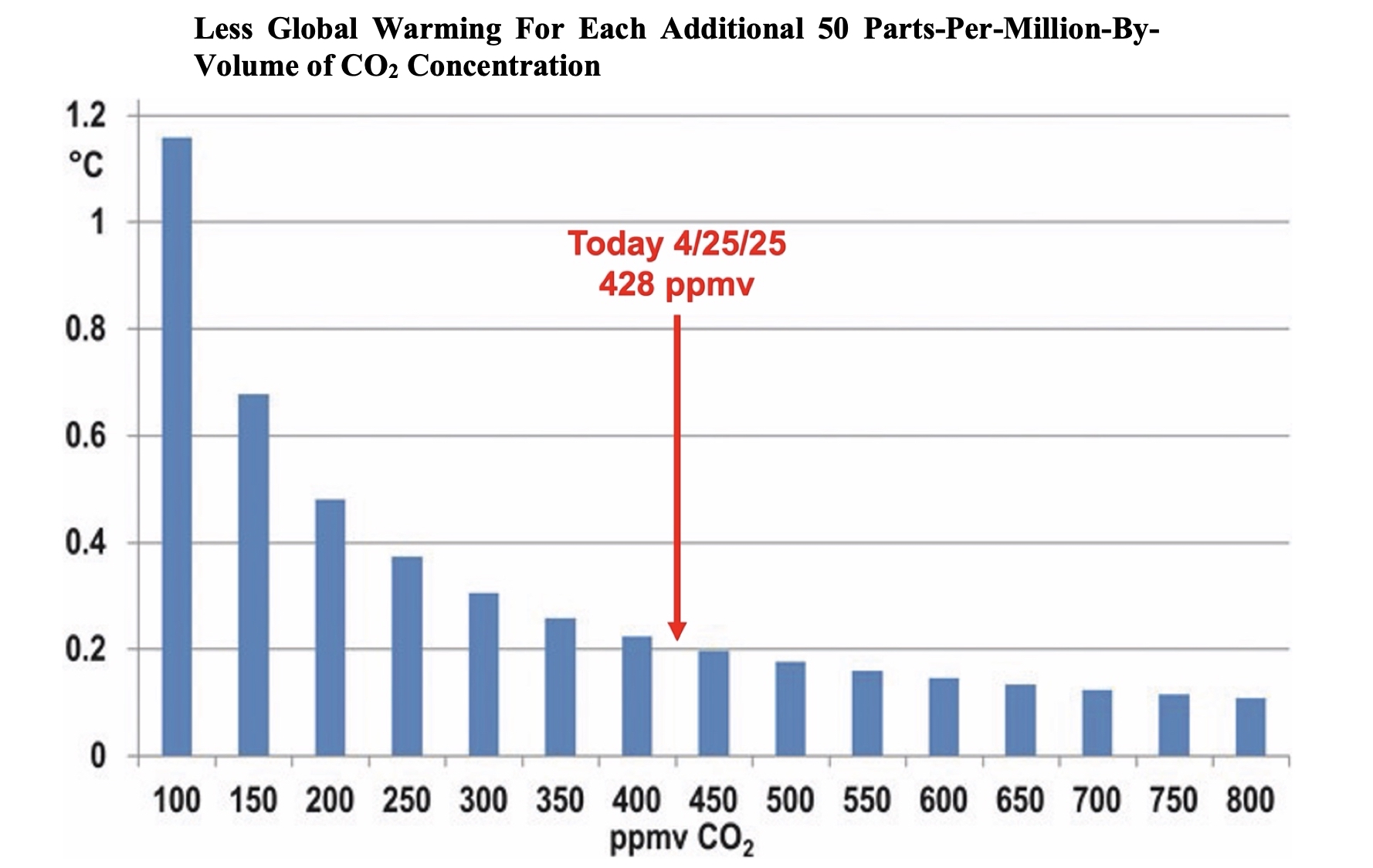The warming effect of each molecule of CO2 declines as its concentration increases

Climate scientists have determined, and both sides agree, that the warming effect of each molecule of CO2 decreases significantly (logarithmically) as its concentration increases. This is one reason why there was no runaway greenhouse warming when the concentration of CO2 was approaching 20 times that of today. This inconvenient fact, important though it is, is kept very well hidden and is rarely mentioned, for it undermines the theory of future catastrophic climate change. Diminishing returns apply.

